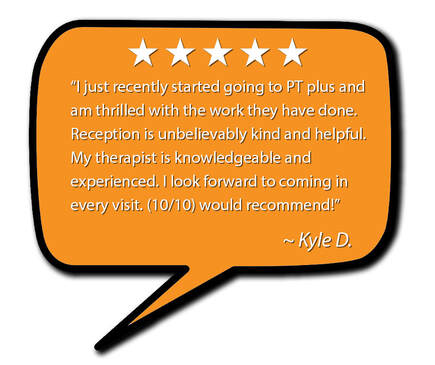 Participating in aerobic activities and muscle strengthening exercises are the best ways for seniors to prevent health concerns and remain independent. Experts say older adults should engage in moderate exercise and strength training each week, however less than one-third meet this recommendation. Fitness Can Help Seniors:
Physical Therapy Can Help Seniors:
There are several ways one can stay active, including:
The most important thing one can do is to keep moving! Find an activity that you enjoy and try to participate in it a few times per week. This will help increase blood flow to areas of healing, decrease stress, improve sleep and increase your endorphins. If it is hard to get started due to pain for physical limitations, physical therapy can help! Resources: 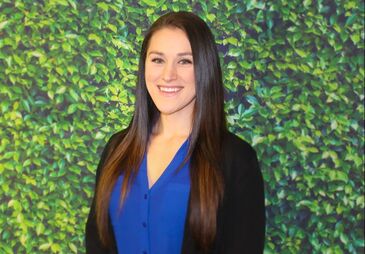 These PT Pro Tips are brought to you by our Thiensville & Third Ward therapist, Alissa Pearson PT, DPT. Alissa enjoys being active. You will often find her hiking, paddle boarding, playing soccer, and playing with her dog. She loves experiencing different cultures through food and enjoys trying new restaurants. She also developed a passion for competing in bodybuilding in 2019 which she is continuing to pursue outside of work.
0 Comments
*Updated 6/1/2022, removed letters from website & listed next to clues to reveal the answer.  Join the fun this National Scavenger Hunt day and partake in the PT Plus Virtual Scavenger Hunt. It might be the only scavenger hunt you can enjoy without leaving your couch! How to Play:
Scavenger Hunt Key Word:  Website Clues:





Good luck and thanks for playing! 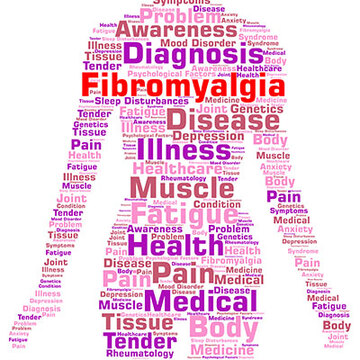 There are between 4 million and 10 million people suffering with fibromyalgia (Fibro) in the US. Some studies say there are 3 million new cases a year. 75-90% are women, usually diagnosed between the ages of 20-50. People with fibromyalgia are twice as likely to be hospitalized, have a lower quality of life, and are 3x more likely to suffer from depression. There are higher death rates from suicide and injury and higher rates of other rheumatic conditions. But what is fibromyalgia? To be exact, we really don’t know. Historically, fibromyalgia has been a diagnosis of exclusion. All other possibilities were ruled out, and if one didn’t fit, you were diagnosed with Fibro. As our understanding improved, we were able to pinpoint some similarities in patients. Typically, sleep was affected, and pain was widespread (all 4 quadrants of the body). In the ‘90’s, we were using a palpation method as part of the diagnosis for Fibro. There were 9 pairs of points throughout the body that were compressed with a finger. If one was painful, that would be positive. To receive the Fibro diagnosis, you would have to test positive in 11 of the 18 points. We don’t use this test anymore and are back to diagnosis by exclusion. Blood tests are performed to rule out other conditions that could lead to Fibro-like symptoms. Pain scores are administered, and history reviewed. There may be some promise for a blood test called the FM/a test, but studies are still ongoing. Common symptoms of Fibromyalgia include widespread pain, brain fog (commonly referred to as FibroFog), fatigue, lethargy, sleep problems, digestive problems, heat intolerance, and feeling depressed. The most prescribed treatment for Fibro is exercise. Unfortunately for many Fibro sufferers, when they exercise, they are often wiped out for several days. Clinically, we find that people with Fibro can do things, but have no reserve, so their ability to recover is poor. So how can PT help with fibromyalgia? A customized approach is the only way to treat fibromyalgia. Often this is based on the severity of the symptoms. PT is one of the members of a needed team. In order to get better, we need proper nutrition. You can eat something, but that doesn’t mean you absorb it. We find people with Fibro are often deficient or in the low normal range for magnesium. Gut health is paramount to good nutrition so you can absorb the nutrients you need. In order to move, you need to feel better. Typically, we will work with you through various manual techniques to try to reduce your pain symptoms. We have a variety of approaches we can use, including Primal Reflex Release Technique (PRRT), positional release (strain/counterstrain), soft tissue mobilization, joint mobilization, muscle activation, active release, and trigger point dry needling. As you start feeling better, we get you moving. Exercise starts as specific neuromuscular re-education. We try to retrain how your nervous system interacts with your skeletal system. This improves “functional strength”. As you progress from there, we can move into more traditional exercise, such as hypertrophy strengthening and cardiovascular conditioning. The key is the progression from pain relief to functional strength to traditional strength. In this pathway, we reduce the rebound effect of exercise and allow the body to adapt at it’s on pace to the new demands being placed on it. Resources Fibromyalgia Prevalence: est. 10 million people in the U.S. (fmaware.org) Fibromyalgia | Arthritis | CDC  Written by PT Plus therapist and co-owner, Mark Snyder Welcome to the May 2022 issue of In Focus with PT Plus Physical Therapy 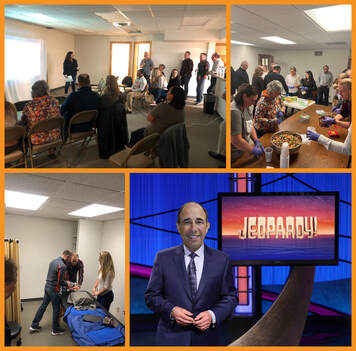 What's New at PT Plus Thank you for helping us Celebrating 20 Years! We celebrated with a CPR training course and a game of company Jeopardy. After, we built Snack-to-Go packages for Kathy's House. And finished the celebration with some axe throwing & shuffleboard at North South Club. 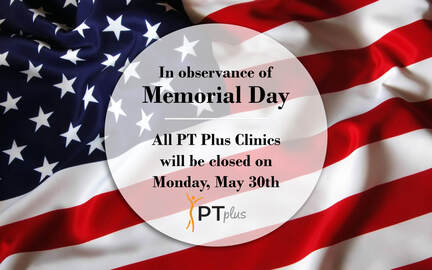 Memorial Day Closing Please note that Monday, May 30th, is Memorial Day. All PT Plus Clinics will be closed all day and will open again Tuesday morning. We hope you will enjoy the holiday with your family and friends! 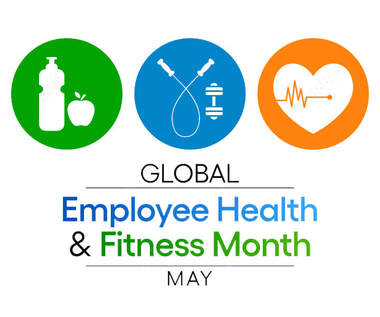 May is Global Employee Health & Fitness Month This month aims to improve the health of workforce around the globe and we're participating. PT can help keep you active in day-to-day life and participating in fitness programs you enjoy. This month we will be sharing more tips and wisdom on social media to help you Live Your Best Life! Follow us to join the fun: Facebook - LinkedIn - Instagram Leave us a Review Support a locally owned small business by referring your family and friends. We care about all of our patients and rely on the word-of-mouth marketing that you provide. If you have a testimonial about PT Plus to share, we would love to hear from you! Leave a Google Review: Bay View – Brookfield – Elm Grove – Greenfield – Thiensville Third Ward – Racine – Slinger – West Bend Leave a Yelp Review: Bay View – Brookfield – Elm Grove – Greenfield – Thiensville Third Ward – Racine – Slinger – West Bend Featured Testimonial  If You Like a Good Bargain, You're Going to LOVE Physical Therapy. It's no secret that prices have been going up. Gas is expensive. Food is expensive. The housing market is crazy. If you're looking for ways to pinch some pennies or stretch your dollars, physical therapy might be just what you're looking for. Physical Therapy Saves Cost A study that looked at the claims data of 472,000 Medicare beneficiaries with back pain found that when PT was the first treatment, costs were 19% lower than when people got injections first and 75% lower than for people who were sent straight to surgery. The study also found that in the year following diagnosis, people who got PT first had costs 18% lower than those who got injections, and 54% lower than those in the surgery group. Another example happened in 2006 when Virginia Mason Health Center in Seattle teamed up with Aetna and Starbucks. They sent workers with back pain to see both a physical therapist and physician for their first treatment. Use of MRI dropped by 1/3, people got better faster, missed less work and were more satisfied with their care. The cost savings was so great that Virgina Mason was losing money on treating back pain, so Aetna ended up paying them more for PT treatments because they were saving so much money. Physical Therapy First Means Fewer Visits…A paper published in Physical Therapy looked at outcomes when patients went to a PT first vs. seeing a physician first for back pain. It found that patients who went to their physician first needed 33 PT visits on average, while those who went to their PT first only needed 20. Seeing a PT first saves money, but it also saves time. It Also Means Better OutcomesA study of 150,000 insurance claims published in Health Services Research, found that those who saw a physical therapist at the first point of care had an 89 percent lower probability of receiving an opioid prescription, a 28 percent lower probability of having advanced imaging services, and a 15 percent lower probability of an emergency department visit. High quality research consistently shows that taking advantage of direct access and getting to your physical therapist quickly leads to better outcomes in fewer visits with lower costs. We think that's a deal worth taking advantage of. References
|
Archives
March 2024
Categories |
|
Central phone: 262-796-2850
Central fax: 262-796-2851 Central email: patientcare@ptplus.com Website by RyTech, LLC
|
|



